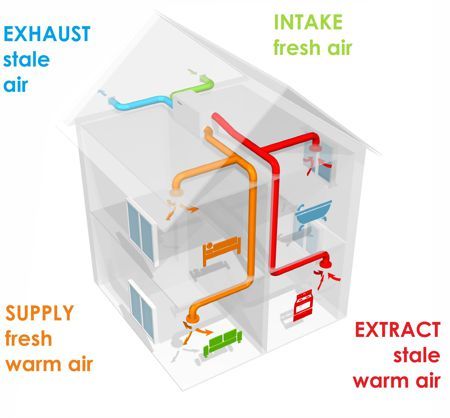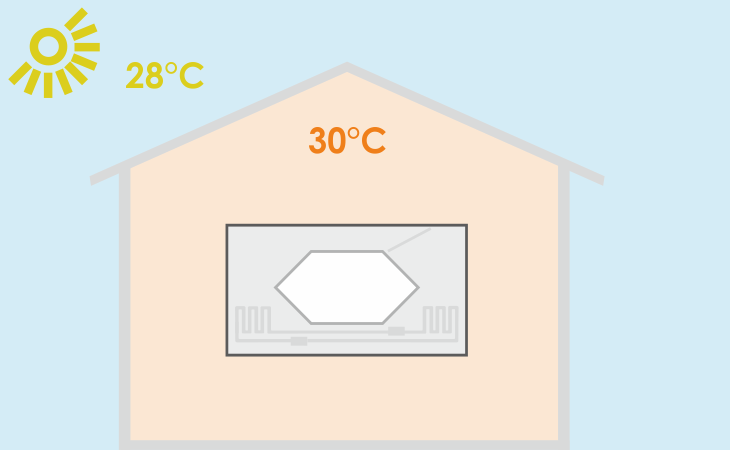how does heat pump ventilation work?
The HPV Series and Genvex Premium units have a heat recovery ventilation matrix with an integral heat pump for space heating and cooling. The heat recovery ventilation part of the unit has two EC*1 fans in it, one bringing fresh filtered air from outside, whilst the other extracts stale air from wet rooms (kitchens and bathrooms) via metal ducting from ceiling terminals. The two airflows go through a heat exchanger (not mixing) and whilst the stale air (minus it's heat) is exhausted outside, the warmed fresh air is supplied through the ceiling terminals, to the habitable rooms of your home (bedrooms, dining/living rooms etc).

It means generally, you will get a whole house air change every couple of hours but remarkably, you will be recycling over 88% of the heat that you would lose through traditional forms of ventilation like extractor fans and trickle vents or other ventilation systems like Passive Stack, PIV or MEV.
However, heat pump ventilation can do more with the air than just heat recovery ventilation. This technology takes advantage of the ductwork already suppyling your home with fresh air, by adding more heat to the air, but in a hugely efficient way.
After the heat exchanger has recovered as much heat as it can, the integral frequency-modulated*2 heat pump takes even more energy out of the stale air, by compressing a refrigerant which then absorbs heat, releasing it to the supply air. (This is rather like when you pump up a tyre and it heats up as you're increasing the pressure inside the tyre. This heat pump works in reverse to your fridge, which takes all the heat energy out of the food and deposits it behind the fridge).
*1electronically commutated to run at optimum efficiency, *2ensures longer lifespan and lowest energy consumption
*1can also be connected to the exhaust of HPV Series unit *2Genvex Premium only has one supply zone and further additional heating zones are only options with the HPV Series PTC ceiling/wall terminals
So the primary heating is handled by the HPV Series unit through the supply air. However, when a particular room needs more precise heat the HPV PTC terminal will supply an extra flow of heat from its heating element. This allows for instant heat, only where and when you need it. The HPV PTC controller is in constant communication with the main HPV Series controller, so that optimum efficiency of heating output occurs.
On hotter days, when you don't necessarily want to recover heat but still want fresh filtered air coming into the house, there is a summer bypass so heat won't be recovered to the fresh air. Of course the heat pump within the unit can also be reversed on hotter days to provide additional cooling (just like your fridge).

The HPW 300 air-to-water heat pump is a 300L water cylinder with an integral heat pump that provides domestic hot water all year round, which is a far more efficient way of heating water than gas or oil. It also has the design option, that means it can alternate between using energy from the outside air or from the exhaust air from the HPV Series unit, depending on the ultimate energy efficiency route. It is able to
produce about 880L of hot water every 24 hours at 50oC, so can
cater for a family of five to six comfortably.
Another advantage is that the
water cylinder has an optional secondary heating coil (or heat
exchanger). This can either be connected to 20m2 (95m) of wet underfloor
heating in up to two zones or it can accept heat, from solar thermal
panels. Of course, it is also ready to accept electricity from photo
voltaic panels, allowing you to run it for free.
Together, the HPV Series and HPW 300 create a PassivHaus
certified heating, hot water and ventilation system.
The Genvex Premium
is also a PassivHaus certified product, but just with heat recovery ventilation, space heating and cooling. It only has one supply zone temperature and cannot benefit from the HPV PTC terminals.